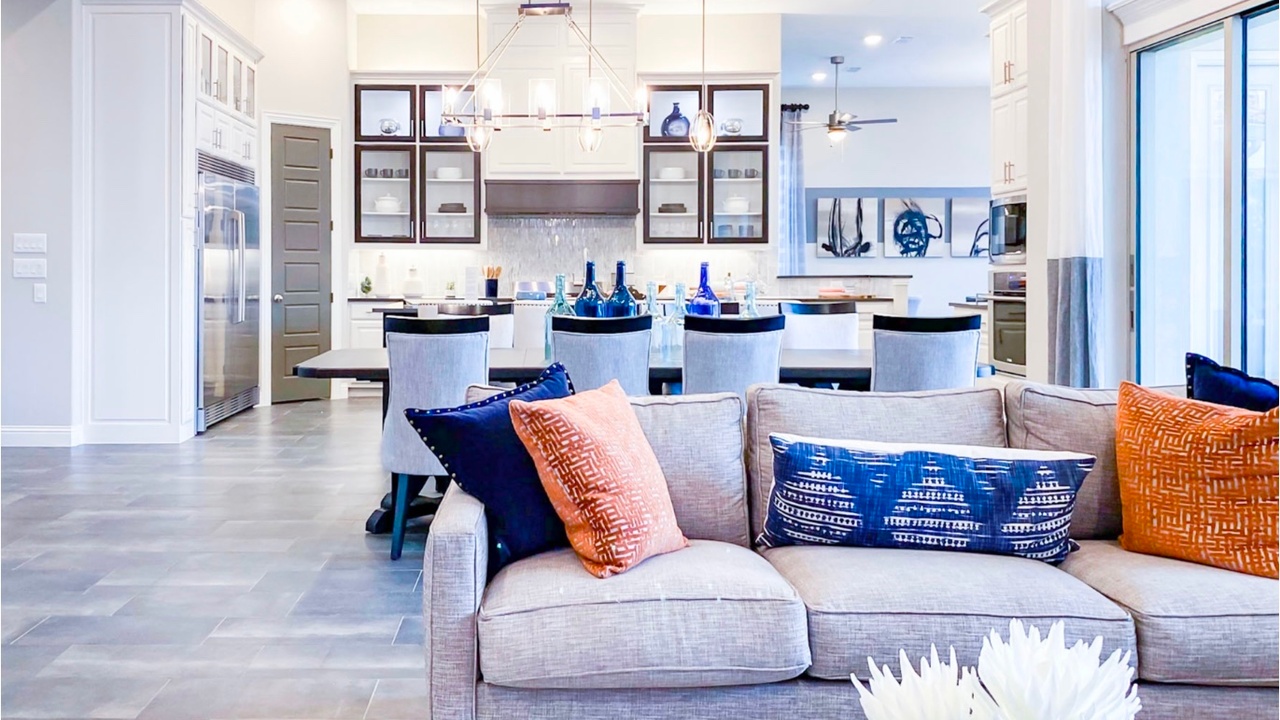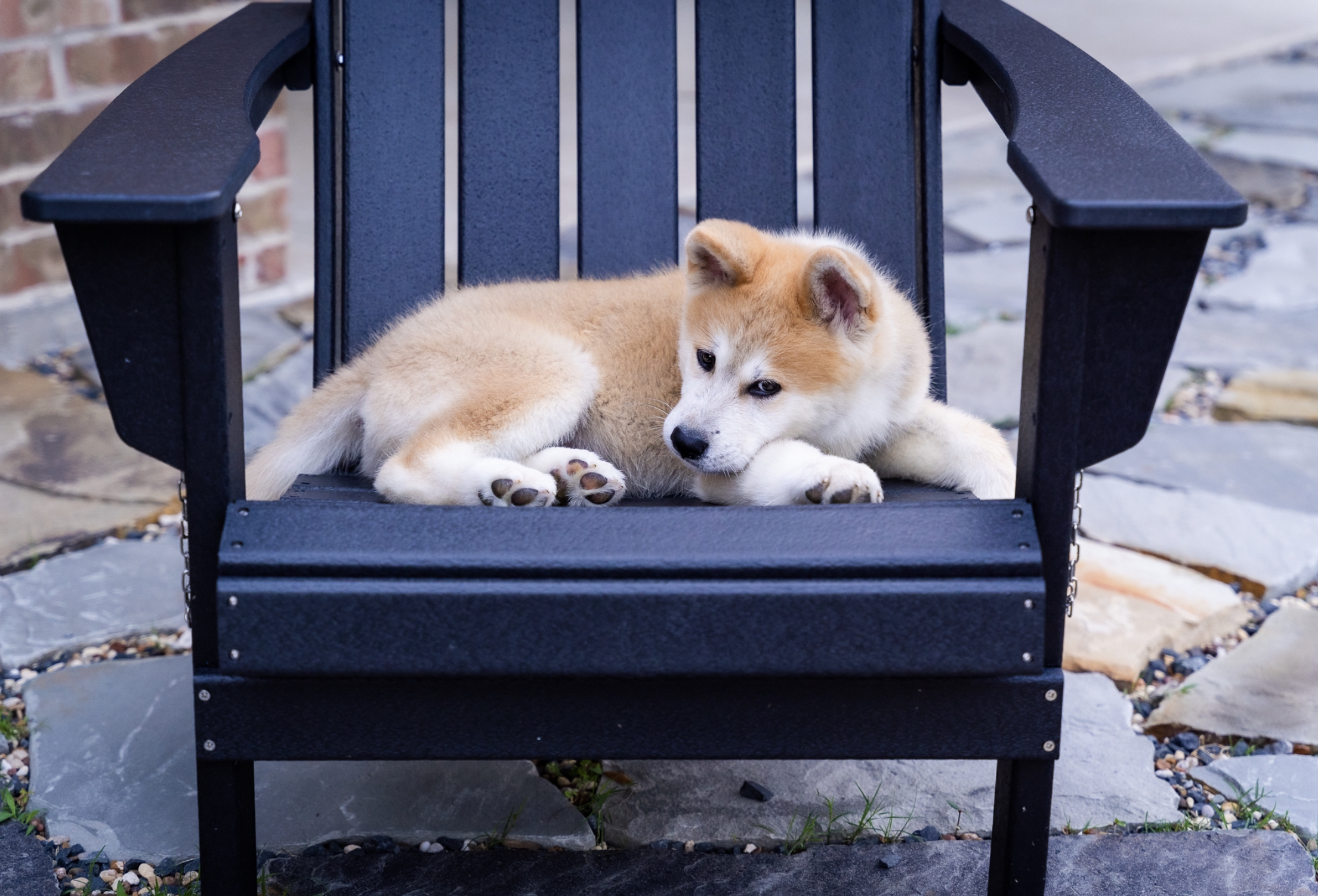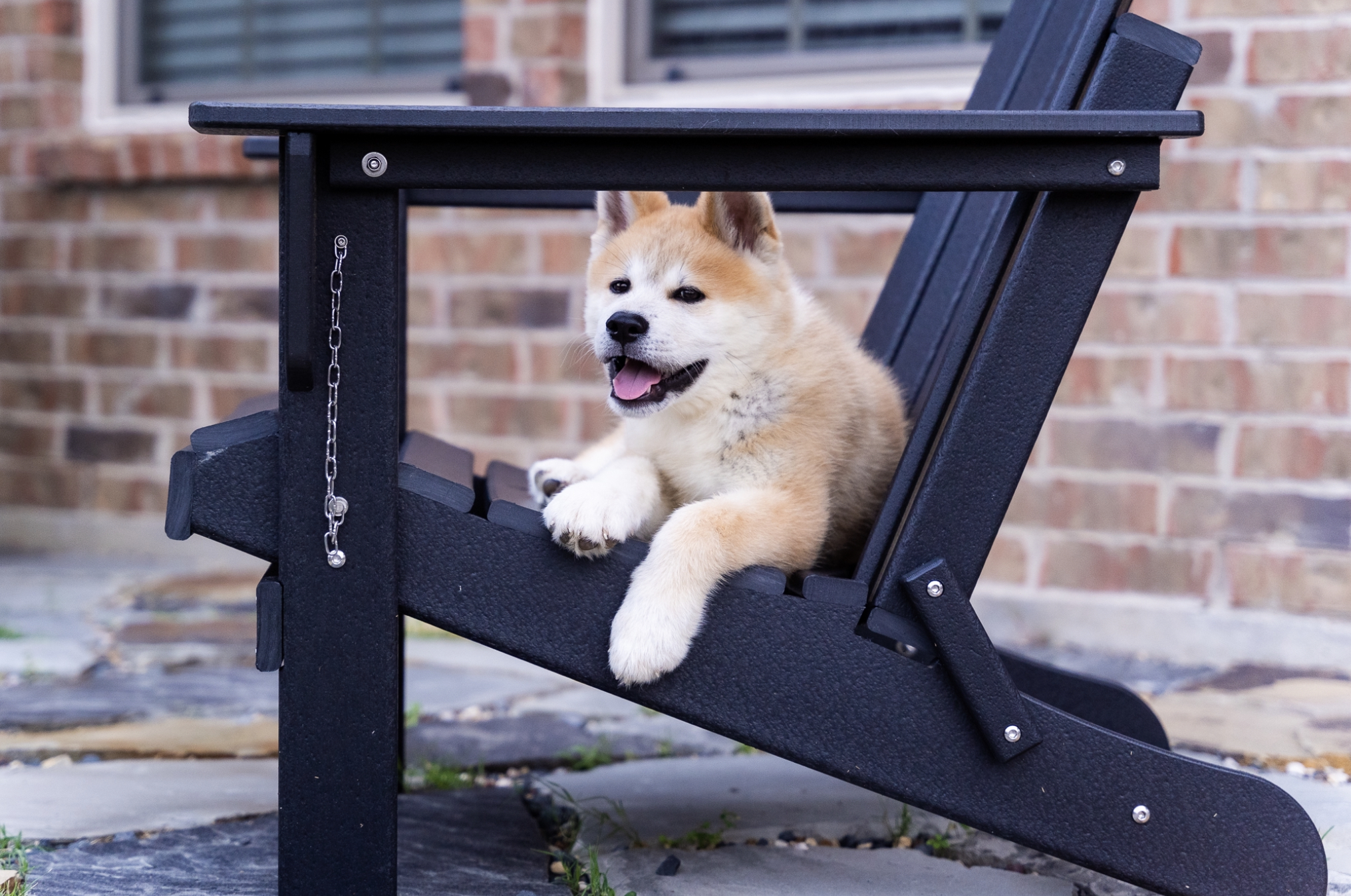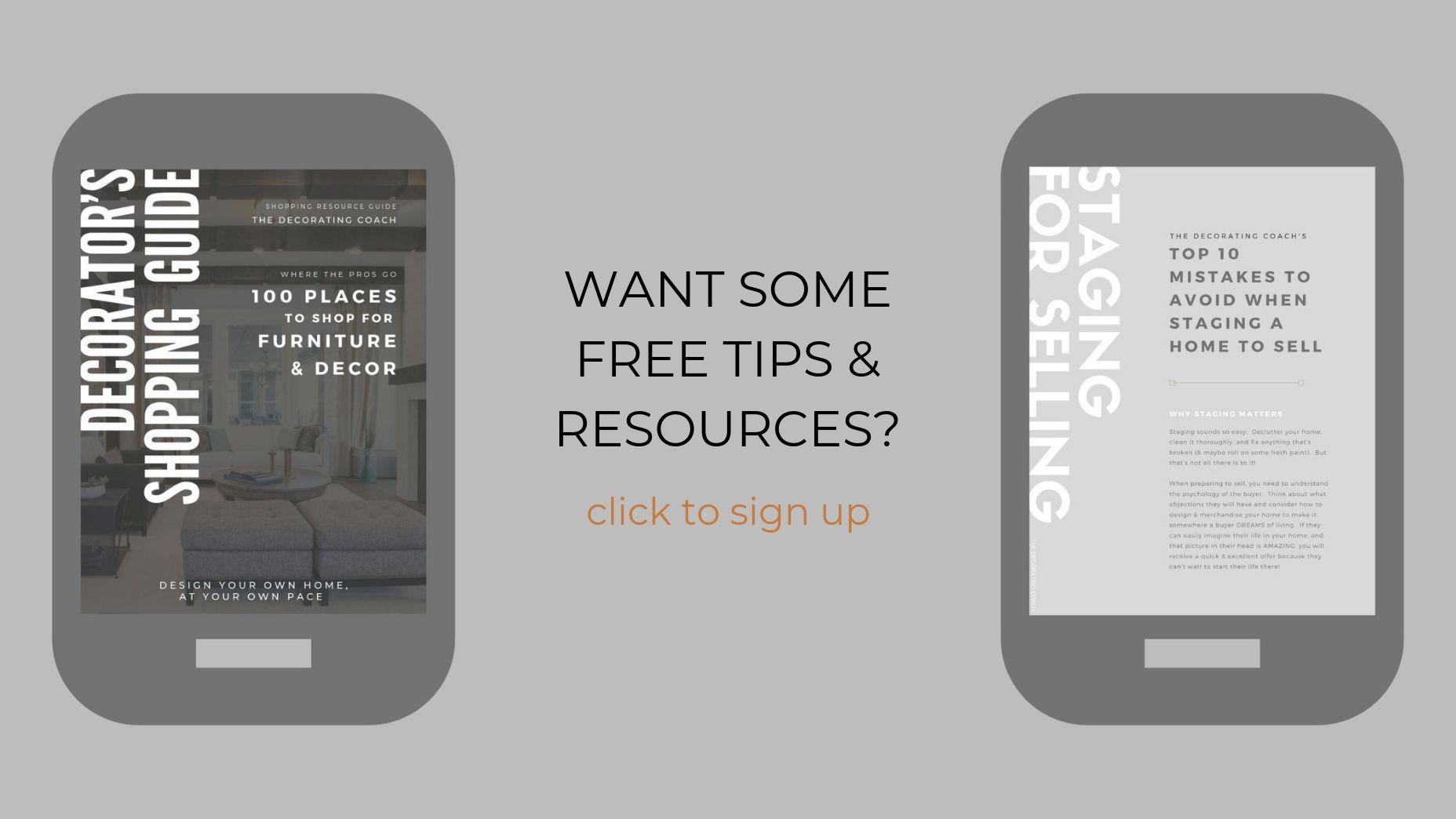New Puppy? How to Prep Your Home so Your Decor Doesn’t Get Ruined

Adding a new puppy to your family is an exciting milestone. You can’t wait to bring the tiny furball home and get your fill of cuddles and playtime.
Just like children, puppies are adorable and provide a ton of laughs; but they are a lot of work too. Using your hands and clothes for teething toys (with their razor-sharp puppy teeth!), the potty-training, tearing up everything they can get ahold of…it’s exhausting. Especially when they begin chewing up your favorite (expensive) home decor!
After adding a third dog to our pack and experiencing the puppy phase again, here are some tips to make the process easier for you. And save your furniture.
Being proactive to meet their physical activity and mental stimulation needs upfront will keep pups from finding ways to be destructive.
Below are a few ideas and favorite finds to help in the search for puppy solutions and preparing your home for your newest furry family member.
*This post contains affiliate links
1. Storage Baskets & Bins
Keep the pup-paraphernalia contained in pretty matching baskets. Just like kids toys, the new doggy stuff can take over a room quickly. Keep one basket for ‘walks’ with leashes, harnesses, travel water cup, treat & potty bags. This will help when you need to make a go-bag for trips to the vet or socialization outings.
Another bin for ‘playing’ with toys, puzzles, activities, and balls. Another basket for special ‘treats’ like freeze-dried bites, chews, and bones.
And a final one for ‘grooming’ tools like puppy shampoo, nail clippers & grinder, and brushes.
These containers will help you clean up quickly, having a designated space to contain the clutter. We keep 2 baskets in the mud room (walking and grooming), and 2 in the kitchen for quick access (toys & treats).
If you want to get really fancy, get big bins/baskets to hide your dog food bags :) Laundry hampers can even work well to disguise them. Put it on wheels and you have a cart you could roll under a folding table keeping the dog food bag out of sight.
2. Cookie Jars
One great tip we learned from a dog trainer is to keep ‘cookie jars’ around your home filled with treats. That way, when your pup needs a reward for good behavior, you can consistently (and quickly!) follow up with an incentive without carrying a treat bag on you 24/7. If you don’t reward obedience immediately, the puppy won’t associate the behavior with the treat.
You can choose a variety of ceramic, glass or metal canisters to blend with your room decor. Preferably one with an air tight lid.
Another benefit of cookie jars is when you need an immediate distraction from something harmful that falls on the floor. A handy yummy treat can quickly divert the puppy’s attention giving you time to pick up the dropped medicine, sharp object, or other dangerous item. The training treats we use most are Stella & Chewy’s freeze dried or these Pupford ones. Another popular kibble to use as a treat is Instinct.
3. Remove your Rugs!
Besides the risk of potty-accidents, puppies love to chew on rugs - roll them up and store them away for about a year so they won’t get destroyed. Bath mats are also a favorite, so keep the door closed or only bring the mats out at bath-time.
While the worst teething phase is over once they reach ~6 months old and have lost their puppy teeth, their molars come in within the next couple of months and another round of intense chewing begins. Once a habit of chewing on a particular item forms, pups will return to that item and continue when bored, anxious or their gums hurt.
12 to 18 months is the soonest to reintroduce your rugs.
4. Use Baby Gates to Block off Rooms
Contain your puppy to 1-2 rooms if possible by blocking doorways with easily installed tension-gates. They will find trouble if out of sight for even a few minutes. A baby gate allows your other rooms and furniture to stay protected (your other rugs can stay!), and contains pups within eyesight at all times.
Tip: Confine them to rooms with easy access to outside for constant potty breaks. They have no bladder control the first few months and begin to associate floor textures with desired potty areas. The more they potty on the grass, the more they will begin to want to only potty there. If the habit forms to regularly go on the carpet (similar texture to grass), they will view that as a viable alternative.
When they do inevitably have an accident on the carpet, quickly clean it with an enzyme cleaner to eliminate the smell. Besides the obvious reason of not wanting smelly carpets, your dog will no longer associate that spot with a potty zone once the smell is gone.
5. Use Exercise Pens to Protect your Cabinetry & Baseboards
Ex-pens keep your pup contained to the middle of the room, away from walls & baseboards, cabinets & large furniture. Puppies get excited with ‘productive chewing’ - meaning they feel encouraged when they see progress from their efforts and will continue to return to the same areas to cause more damage. Cabinets are a favorite chew toy, and one of the most expensive to replace.
While baby gates are great when they are free and you are watching them closely, exercise pens are great when you have things to do - like make dinner, do laundry, or take a shower. They give pups a little room to move around and still be able to see you, but not destroy your home. (Basically they are play pens for dogs.) Give them a chew bone or puzzle toy and they will happily stay in there until you can give them your full attention again. Here’s a taller ex-pen for larger dogs.
I learned this the hard way, with the footboard of my upholstered bed as the collateral damage. Every time I needed to step out of the room for even 30 seconds, our pup would start chewing on the same corner of the bed.
6. Direct Your Puppies attention to Consumable Chews
To meet the need for ‘productive chewing,’ give puppies chews and bones that require work but are safely edible. Avoid rawhides, as they don’t digest well. Our trainer recommended No-Hides and Bully sticks. Our puppy gets one every night before bed to help calm down and will work on it for 30-45 minutes.
7. Dedicate a Portion of your Fridge & Freezer to Puppy Treats
One of the best things you can occupy your pup with is a frozen treat toy. Licky mats & bowls, and Toppl toys are the best. Freeze wet pup food, plain Greek yogurt, canned pumpkin, peanut butter (no xylitol), or cream cheese on them - better yet, add a little of 2-3 of those at the same time as they will enjoy the surprise of flavors.

Toppl’s are a life-saver that I used 3 times a day for the first 3 months! After that, once or twice a day. Stuff with yummy frozen treats and they are a great lure to get pups to happily go into their crate for nap time. Start with the small size and graduate to the large Toppl later if you have a large breed dog. (You can even connect the large & small together for another toy!)
And licky suction mats are the perfect distraction at bath time! Get the kind with suction cups on the back as they will adhere to the vertical surface of the tub and keep your pup occupied and in place while you bathe them. These licky mats are a little thin to be chewed on just sitting on the floor alone (teething puppies will destroy these quickly - the heavy duty licky mats above are better to set on the floor), but suctioned to a surface like a bathtub, these thinner mats will stay in place for their intended distraction.
8. Find a Kennel Crate you can Keep by your Bed
At least keep the kennel by the bed for the first few weeks. As your puppy is adjusting to a new home, away from their mom and litter mates, they will feel vulnerable if they wake up alone at night. When they can see and smell you, they know they are not alone and can fall back asleep.
We prefer the enclosed crates as the metal ones make more noise when they move around at night. We have a metal one too, we thought the dogs would prefer it for the air-flow, but all 3 of our dogs have preferred the enclosed ones. Perhaps because they feel more den-like.
This bedroom kennel is great for afternoon naps as well. If you have blackout lined curtains in your room, they will help your pup sleep soundly for 2-4 hours straight. The first few months, put them in their crate to nap 1-3 times a day; for 2-3 hr stretches of time (6 hrs total of crate nap time during the day max, as they are also in their crate 8-9 hours at night.)
Don’t skip these kennel naps, even if you are home all day. They are great breaks for your sanity, and it helps the pup to have alone time too. If you give them a frozen treat each nap time, they will happily go in the crate, work on it for the first 20-30 mins and then fall asleep.
*Pups are a lot like toddlers - when they get overtired they get cranky and won’t just lay down for a nap on their own. Puppies get extra-bitey, destructive and often start seemingly ‘attacking’ you out of nowhere, causing you frustration. They are communicating they are worn-out, but don’t know how to calm themselves down.
Calmly pick them up, put them in their crate with a frozen treat for nap time and you will solve this problem. (The frozen treat is not rewarding the behavior, it’s giving them a healthy outlet as licking is very calming. Because you pick them up first, there is a break between the behavior and the treat, thus no association or reinforcement.)
Tip: At first, your puppy may be nervous when left alone for kennel naps. Start with them in the crate with you sitting nearby. Then start doing an activity in the room like dusting, then walking in and out every few minutes showing them you come back. We left the tv on at first for some noise. Eventually we worked up to 3-4 hours of silent alone naptime.
Petmate crate, standard enclosed kennel, most economical.
Dakota crate with keyed door locking mechanism, in fun colors, and safe for road travel. Reviewers say this works well for escape artist dogs. Good value in the class of premium kennels. Handle design on top works to also strap down in a truck.
Lucky Duck crate, American made, crash tested for road travel. Similar to Ruff Land, Gunner, and Impact premium kennel brands.
Diggs Collapsable Travel crates are also popular and come in fun colors too, great if you need to bring your kennel with you. You can get a fabric crate cover to help them feel more enclosed.
9. Daily Walks
While physical exercise is obviously beneficial, I was surprised to learn that sniffing on walks is just as important. Dogs sense of smell is over 10,000 times as strong as ours, so sniffing their surroundings is similar to how we explore the world with our eyes.
After a good sniff-walk, puppies will be worn out physically and mentally, with little energy to be destructive to your home. One to three walks per day for 20 mins or less in the first few months, moving up to 45+ min walks when they are 7-10 months old, as they hit their rebellious adolescent phase & you really want to burn off their energy! (Walk length can depend on breed, ask your vet.)
A dog harness for walks is preferable to a collar for multiple reasons. Any resistance from pulling is not concentrated around their neck, and with a harness the leash connection point is further down their back, making it harder to reach and chew the leash.

There is also a connection point on their chest if you want them to walk next to you, or if another dog comes by and they pull, your puppy automatically will pull themselves around to be face-to-face with you instead.
This neoprene dog harness is a favorite too - lighter, softer, more flexible material with 2 different leash connection points on the back, plus one on the chest. Seems to be more comfortable, and it comes in beautiful colors! It fits slightly higher up on the neck.
Another tip we learned from the trainer was not to use a retractable leash. This 7ft leash (slightly more rigid with extra handle grip) and 6ft leash (slightly thinner & more flexible) has been great for us. We like both leashes and select which one to use depending on the outing.
One last tip is to add variety to your walks! Drive a few minutes down the road to a new neighborhood or park. New smells and scenery will help to stimulate your pup, and tire them out even more. Observing new places and experiences are a form of healthy socialization. Let your pup sit from a safe distance and watch bicycles, people jogging, noisy garbage trucks - anything that is new to them.
A dog car seat protector keeps the dog hair contained and available chewing surfaces restricted. Helps if your pup gets car sick too.
I thought the term ‘socializing your dog’ meant having them play with other dogs and people. But it can just be exposing them to life outside your home - socializing them to be comfortable in many different environments.
10. Tether to You Inside the Home
One of the best ways to keep an eye on your pup in the early months is by having them tethered to you with their walking harness and leash when inside the house. Especially if you have young kids, or other dogs that don’t want a puppy constantly pouncing on them to play.
Tethering to you is a happy in-between from the baby gate and exercise pen. They have a freedom to move to other parts of the room, but they are right next to you so you can immediately stop them from chewing on the wrong things or going out of your eyesight to get into trouble.
You can put the leash handle around the leg of a sofa if you are watching tv, or around a desk leg if you are working. Give them a chew bone to work on too, because you do not want them to start chewing on the furniture when they get bored. *Only attach to furniture when closely supervised and with a more enticing chew.
They may chew the leash - if this becomes a problem, use a lightweight chain leash they can’t chew through. Just make sure it doesn’t get wrapped around their leg if they are moving around.
11. Vacuum Cleaner for Pet Hair
Most dog breeds shed, and to keep your carpets and upholstery hair-free you will want to invest in a good vacuum. We used a Dyson Animal vacuum for 10 years that preformed well for us, but after adding a 3rd dog we decided to upgrade to a new model.
The Shark Vertex is impressive: great suction, settings for hard floors and plush carpets, a headlight for dark corners, and lift-away feature for getting under furniture. Though the vacuum is a little heavier than some, the self-propelled-glide helps it feel effortless to use. This was a great investment.
I’ve heard great things about the Bissell Pet vacuum as well, and it is less expensive.
And for a quick touch-up, these reusable lint brushes work great on upholstery too.
12. Outdoor Solar Lighting
All those late-night potty runs the first few months are much easier when you can clearly see your puppy and your surroundings. Usually carrying them to the backyard is best, or they might have an accident right when they leave their crate. And when your hands are full, it’s hard to bring a flashlight.
Lighting is important. You want to be able to see if you pup picks up anything in their mouth, as they are prone to do at this stage. Consuming mulch, rocks etc can cause problems with their digestive system. And be sure no other animals are in the yard. Our yard is regularly visited by bunnies, with the occasional small frog and once a huge spider. You want visibility!
Using these outdoor wall or fence solar lights, attached with outdoor adhesive mounting tape, is a great solution. (The tape will even adhere to brick and stone! Even very uneven stone - just double-up on the tape.) Or these solar in-ground lights work great too.
One other thing I bought to make these evening and late night potty-breaks more bearable is this insect trap. We have a big mosquito problem, and to prevent them from coming inside every time we open the door, or completely eat us up while we are monitoring the puppy outside, this has been a great find. You do have to empty the bin every month or two, and replace the bulb every 4 months or so, but it’s well worth it.
Favorite Toys & Feeding Finds
There are endless options with dog toys & bowls. Here are a few of our favorite finds:
FEEDING TIME
I loved the look of these copper and black dog bowls. We added them to our elevated dog feeder. Raising bowls from the floor helps with safer food and water intake, especially for larger dogs.
Hot summers? This insulated water bowl or this Yeti dog water bowl are great to cool your pup off.
FOOD PUZZLES
Another good option is a puzzle food bowl. These help to slow down their eating, making them work harder to get their kibble.
One way to keep your pup mentally engaged is to make feeding time a game. Our favorite was this snoop toy for dispensing kibble and small treats. Dogs roll it, spin it and bounce it for the kibble to fall out.
A snuffle mat is also a great tool to encourage foraging for food using their sniffing skills.
TOYS
Pups love a variety of textures, so fill their toy box with multiple options. Sometimes they want something harder, sometimes softer for their sore gums. Think of a furry animal, a rubber ball, a woven rope, and a hard bone. All are great to have on hand so they don’t go searching for a throw pillow or wood furniture leg to chew instead.
Flirt poles are a great way to play with your pup, while keeping their sharp teeth away from you. They are aluminum poles with a bungee cord and toy on the end to chase. (Tip: We learned to only do 4-5 chase sessions with the flirt pole per play session the first few months, as any more were too overstimulating and our pup became more bitey afterwards if we played with it too long.)
Squeak toys are important too. I learned this tip way too late: when puppies first start biting on you, do NOT react no matter how painful.
Why? Any quick jerk (pulling back your hand or clothes from their mouth) or noise (“ouch!” Or “No!”) and you have now become their favorite squeak toy to chase & bite. A few repetitions of pulling back and making noise = a new habit.
Angry frustrated attention is fine with your puppy: when they are in play mode, they will take ANY attention, good or bad. My injured hands, legs and torn clothes can attest to this. Bandaids and wound care were staple items for me during the teething phase. Once the play biting habit started, I couldn’t get it stopped, only occasionally diverted. My husband is the strong-silent type, who calmly ignored the dogs bitey-behavior from the very beginning and he went those months nearly bite & scratch-free.
Completely freeze and do not react, no matter how much their teeth hurt. Or squeak a toy and throw it away from you. Or give them a command like “sit” while holding a treat above their head to distract them to a desirable behavior. Those are the 3 things we learned. Keep a squeak toy and treat bag handy if the habit has already formed!
DIY
Like us, dogs like novelty and get excited by new things. But constantly buying toys gets expensive.
Using an old towel, cut off strips & tie a large knot in the middle. This can be a great washable chew toy.
Your trash. Don’t forget that an empty box, milk jug or bottle can make a great toy for the day. Fill an empty water bottle with some kibble inside, remove the lid & your pup will have fun rolling it around and getting the food out. Loosely tape an empty box with treats inside and watch your dog love tearing it open.
If your pup loves to tear things up, give them the outlet with a box to shred - just stop them when the shredding turns to eating the pieces of cardboard.
Puppies only have so much impulse control - their instincts for digging, shredding, and chewing need safe outlets. You control what you want them to shred and chew.
Tip for digging: one solution if this is an ongoing problem is to use sand: fill a temporary sand box, or a small kiddie pool works too. Hide toys in there and let them get out their energy digging at the sand. They will go to the area of the yard with easiest dig-ability. Don’t let it be your flower beds loose soil and mulch. With the option, pups will dig the sand.
Digging was only an occasional issue for us, so we covered the holes with a wire mesh, held in place on the corner with stakes in the ground and filled the holes with dirt. They can’t dig through the mesh and the lawnmover goes right over it; problem solved. Grass will eventually grow there again.
If you’ve made it this far, hopefully you haven’t been scared out of puppy ownership. Dogs are amazing companions and will become (mostly) mature, calm adults in 18-24 months. For the first year of their life, they are going through infant, toddler, childhood and teenage years extremely quickly.
Using these tricks will help you keep your little furball from destroying your home decor, keep your sanity and make puppy-parenthood a little more enjoyable.
…And we’ll wrap this post with a dose of puppy-cuteness: (Akita Inu - 2 months old)


Photos taken while touring Landon Homes builder model
*As an Amazon associate, I earn from qualifying purchases* Think of me as your personal shopper, but Amazon is footing the bill for the service. If you purchase an item using the link here in this post, there’s no additional cost to you, and for discovering & sharing this new item for your home, I earn a small commission from Amazon to cover the administrative costs of running this website. Win-win :)
decorating tips concierge
Get the latest design tips & strategies delivered to your inbox every month.
(Yes, they are FREE & we keep your privacy.)


























































